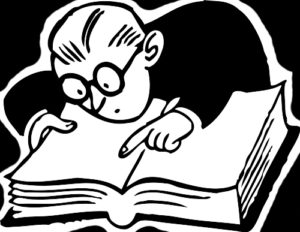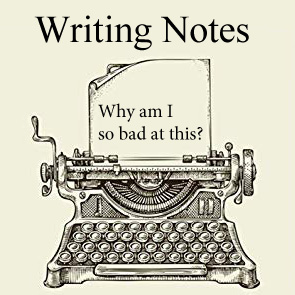Posted on July 28, 2021
Writing Excuses Notes: How Do I Write a Story, Not an Encyclopedia?
Here are some notes I took after listening to Writing Excuses.
It is an educational podcast that helps novelists/writers.
The topic was from Season 10, Episode 20.
How Do I Write a Story, Not an Encyclopedia?

[Brandon] This episode: Taking all the world building you’ve done and getting it into your story without boring your reader.
This is a really hard thing to do. It involves avoiding something we call “info-dumping”.
[Howard] Here are what I perceive the skill levels to be for this:
Skill Level One: “The plasma cannon is a fusion powered thing that magnetically bottles plasma and shoots it at the enemy.”
Skill Level Two: “Son, you’re going to break that plasma cannon. It’s a fusion powered thing…” “And no, that throws the magnets out of whack and the column won’t stay straight.”
Skill Level Three: I can’t come up with off the fly.
That’s where over the course of two or three paragraphs, the reader is told the things that they need to be told for the purpose of this story: it’s a magnetic bottle that shoots charged particles.
So later on: When we introduce some other charged particle magnet thing, we understand why the plasma cannon failed.
[Mary] A technique: What info does the reader need to know in order to continue the story?
[Brandon] Writers can fall into the trap of being: “Well, I spent all this time on this thing. This thing is cool because I’ve spent so much time on it, so I’m going to dedicate an entire chapter or half of chapter to talking about this thing that isn’t relevant to the plot.”
[Mary] You need story questions and ensuring that you give the readers information they need.
It’s totally fine to not describe everything that is going on with the mechanics of the ‘thing’
Ex: If you pick up a phone, it makes telephone calls. I can connect. I do not need to know anything else about that thing.
[Dan] Not: He picked up the phone and dialed some numbers on the touchscreen and the signal flew up to the satellite and then bounced around… You don’t need to know all of that.
[Mary] Unless that rolls into giving a reader a piece of information that they need to know to understand the story.
Try laying the groundwork/providing the geography. Layer things in.
Not: “She picked up the black plastic receiver with the cord coming down in a spiral pattern to the phone and dialed it.”
Instead: “She picked up the phone, she dialed it, she twiddled with the cord as she was talking…”
[Dan] If you want to describe what kind of phone, it can say something about her:
like her level of technology, about her poverty level, she can’t afford a cell phone. She still has an old corded phone. Things like that.
[Howard] Or… It was… She fiddled with the cord nervously, just like she’d seen her grandmother do. She couldn’t bear to part with this phone, because it made her think of grandma.
Now it’s an emotional touchstone for the character.
[Howard] A Key Point: Making scenes serve multiple purposes.
What we’ve just done here with the telephone is having an element serve multiple purposes.
That’s actually Skill Level Four.
It’s a point at the world building has been transparent and everything that you put in the world is doing double/triple/quadruple duty.
So, you’ve picked the proper things to world build. What next?
[Mary] One way you can mask the fact that you’re passing information to people is through the point of view of the character.
This gets into Howard’s example with the emotional relationship a character has to an object.
You can lay the foundation for future motives by already explaining that something exists.
[Brandon] As a writer, just giving us the information in a paragraph should be your last resort.
Now, it’s not you should never do that.
Occasionally, as a writer, you sometimes have to just give the information across.
But that should be your last resort, because it’s kind of lazy.
[Mary] Sometimes, it really is the only way for clarity. It’s totally fine to give info in paragraphs. Just work with tools to help the reader not feel like they’ve just wandered into an encyclopedia
A Tip: Having the character have a reason for thinking about that paragraph.
The danger of this tactic is when someone is trying to slip it in, you’ll get into the “As You Know, Bob” –
This is where the character is thinking about or explaining something that they already know.
If you can explain/give context that way in relation to a conflict or something like that, it will often feel much more organic.
[Brandon] I call people discussing something they already both should already know “maid and butler dialogue”.
This is where the effectiveness of a Watson character comes in.
Where you can have a character, who doesn’t know about the thing, who can be told about the things so that then the reader can be told about the thing.
[Howard] Another way it is to have ‘the thing’ break. To have two people working on fixing it, and they are arguing about whatever. Any ‘significant hook’ or item in your story will require exploring it working / it not working or the conflicts. Those are likely to already be a part of the story, so that organic moment for dialogue is almost certainly already there.
[Dan] Dialogue, while a very useful tool, is not automatically organic.
Example: The Da Vinci Code. Sophie is the Watson character, the dumb cabbage head, and she’s obviously just there so other characters can talk philosophy at her.
How do we go beyond just introducing dialogue to specifically explain ‘the thing’?
[Howard] I start by asking questions about the emotional impact.
You already know how this is going to get used.
How do people feel about it?
How are they going to feel about the action?
What emotional attachments do they already have to the thing?
[Mary] We’re also talking about seeing the item in use.
It can be an item, a cultural practice, part of the landscape, etc. It doesn’t matter what ‘it’ is.
What matters is seeing it in use and seeing people interact with it.
That allows for description.
You can say, “ran her hand across the smooth wood of the sailing ship.” Then, okay, so I’ve just told you that this is a wooden ship.
It becomes having the character interact with it instead of simply stating that there was a wooden ship sitting in the harbor.
[Brandon] A key aspect: Don’t stop the story for description.
Example: It’s like a storm is coming, the boat starts creaking, and we have to keep the boat going in the storm.
Come up with an exciting, interesting scene full of motion, conflict, power and emotion. Then interject these world building descriptions to help cement us in the scene.
[Dan] An example of this being done well: The pilot episode of Breaking Bad, in the description of how the meth is manufactured.
They have Walter, a scientist describing the process to a student, but also the result of the process going wrong.
We get to see all the precautions that they have to take, which informs the process itself.
Then, at the end, they use the side effects of that process to get out of a bad situation.
It all becomes wrapped together into a cohesive impact.
[Mary] A Reminder: This ‘fullness’, where we show all of the different aspects of the thing, is something that should actually be plot-specific.
[Dan] Exactly. It shouldn’t exist for extra world building information.
[Mary] Right. Understand what function this is serving in your story. If it’s just background color, then you can just mention it in passing and move on.
[Brandon] Even if you know a lot about that world-building, it can be more of hindrance to explain. Rather, you can mention it in passing to have it serve as ‘background’. You never have to fully delve into it. It can simply be a history that the story doesn’t have time for. The illusion of ‘a full world’, whether you’ve thought it out or not.


